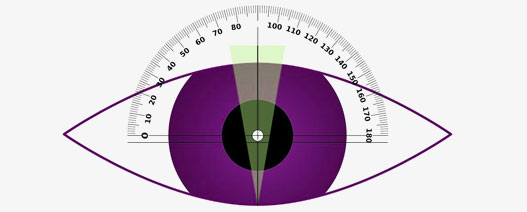An eye prescription holds the readings that your optometrist records each time you go for an eye test. The prescription has lot of numbers and letters it is usually in a rows and columns . it is better to understand it.

Let’s start with the basics –
- + long-sightedness or Hyperopia
- – indicates correct near-sightedness or Myopia
- RE/ O.D. – Oculus Dexter or Right Eye
- LE/ O.S. – Oculus Sinister or Left Eye
- PD – Pupillary Distance
- DV -Distance Vision
- NV -Near Vision
- SPH- Sphere
- CYL- cylinder
- BC – base Curve
- DIA – Diameter
- VA Visual Aquity
Sphere (SPH)
SPH or Sphere is the power of the lens required to correct a single vision defect. This denotes if a person has myopia or hyperopia. It is measured in Diopters (D). The values can be different for both the eyes.
- Corrects Myopia & Hyperopia
- Ranges from 0.00 to +/- 20.00 D
- Higher prescription means high degree myopia/hyperopia
Cylinder (CYL)
CYL or Cylinder power indicates that the cornea of the eye is not perfectly sphere in shape. If you have some numbers in your CYL grid of your prescription, you will require eyeglasses to correct astigmatism.
- Corrects Astigmatism
- Ranges from 0.00 to +/- 4.00 D
- Higher prescription means high degree astigmatism
Axis
Axis reflects the exact orientation of your astigmatism. It is measured in Degrees. If your prescription has a CYL value, it is sure to have an axis value too. If your prescription holds a CYL value and no axis or vice versa, it means your prescription is either incomplete or incorrect
- Indicates degree/direction of astigmatism
- Ranges from 0 to 180 Degrees
- Always present along with Cylinder Value

ADD (Addition)
Add or Near Addition power is added on the lower part of the multifocal/bifocal lenses to correct presbyopia. This helps one in performing close-up tasks with ease.
- Indicates the additional reading power
- Used in bifocals, progressives and reading glasses
- Added at the bottom half of the lens for people with presbyopia
Pupillary Distance (PD)
Pupillary distance is an important measurement from the center of one eye to the center of another. This is used to mark the exact optical center in your lenses which further helps to view things properly and without any eye strain.
- Distance between the centers of two pupils
- Ranges from 50 to 70 mm
- Incorrect PD value can cause eye strain & visual distortion




